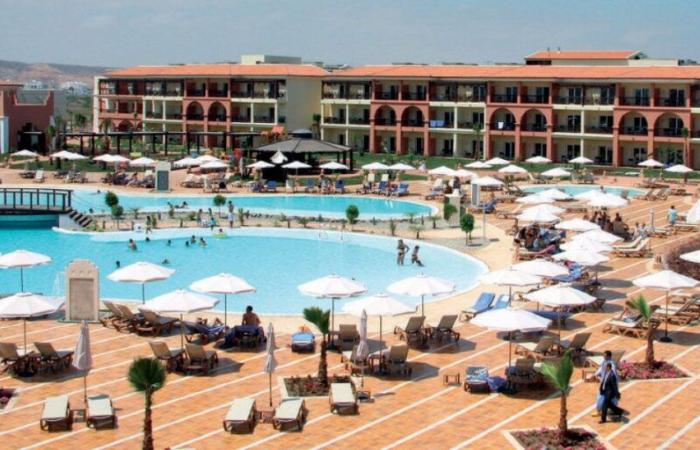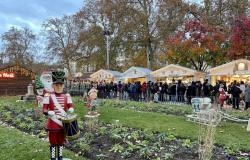At the crossroads of the Maghreb, Africa and Europe, the Oriental region constitutes, side by side with that of Tangier-Tétouan-Al Hoceima, the Mediterranean facade of the Kingdom. Its prime geographical location and its progress on the Fast Track of economic and social development make it a driving, emerging Region, fully anchored in national strategies. Today, it is experiencing the culmination of more than 20 years of growth, inspired by the Royal Initiative of 2003, but contributes with foresight and ambition to the national effort which makes 2030 a propulsive deadline for development.
To make its contribution, the Oriental obeys a well-defined strategic framework, which is none other than the New development model (2021), reinforcing and completing the sectoral vision of 2030. To do this, from the first years of the present century, the Region aligned its regional strategies with its geographic, tourist and cultural assets, but also with its challenges in terms of social inclusion and regional, national and international connectivity.
Industrial liberation and digital dynamism: strategic pillars for accelerated growth in the Oriental region
Basing its approach on a complementary dynamic, the Region makes Port Nador West Med (NWM) a catalyst for development. This port platform which is located less than 400 km from the Strait of Gibraltar has granted the Region the title of an industrial hub par excellence. This work, whose launch is planned for the first months of 2025, is the fruit of a Royal vision, driven by the visionary roadmap of His Majesty the King, may God assist Him, during His Speech of March 18, 2003 , in Oujda.
A true engine for the regional and national economy, the Port is becoming a new nerve center of economic activity. It stands out for its logistics offering and its role in trade, but also for its quality as an industrial catalyst, creating an environment favorable to employment and skills development. In support of this dynamic, industry has been prioritized in OFPPT training programs over the last decade, reaching 31% share, to meet market needs and strengthen local skills.
Faithful to this adaptive logic, and in full awareness of the promising potential of digital technology for economic growth and social inclusion, stakeholders in public action at the Oriental level are making this area a major vector of emancipation, in a logic of digital transformation oriented by His Majesty the King may God assist him, and outlined by the Maroc Digital 2030 strategy. This is carried out through collaborative action where the Wilaya of the Region of Oriental and the Regional Council, under the guidance of the Ministry of Digital Transition, play a role in guaranteeing the development of local skills. This results in the signing of two agreements for the creation of a coding school and a startup incubation center in the Region in 2022, with a budget of MAD 43.8 million.
This spirit of synergy calls on the Oriental Regional Investment Center (CRIO) to promote investment in the sector. A promotion that makes digital transformation a decisive infrastructural change. Result: the Region is today a leading destination for international outsourcing. Between the Oujda Technopole, the Selouane industrial park and the dozen other reception areas, suitably designed for industries and services, businesses are setting up that generate significant employment, such as Tessi and Intelcia.
This supporting role of the CRIO ranges from the simplification of administrative procedures and access to financing, to the supervision of small and medium-sized businesses, assisting them on the path to productivity. For this purpose, the entity also collaborates with the Regional Council and AMDIE, supporting the emergence of players in the informal sector, whose regional share has seen a clear decline over the last ten years. .
For an equitable and inclusive Oriental: the ESS proves its value
Each region of the Kingdom has its specificities and its strengths, which it draws from its own identity and wealth. For the Oriental, one of these strengths is inherited from its social culture and its local products, bringing together dates, truffles, clementines, olives, spices and others. These resources are at the origin of a value chain with an extended scope, including exports. But initially, it is an impressive human potential which is mobilized to form around 5,500 cooperatives (2022) in the Region. Alongside associations from the eight provinces of the Oriental region, these cooperatives make the Social and Solidarity Economy (ESS) a major lever for progress at the local level.
This inventory, which is part of the evolution, arises from a desire in line with the findings formulated by the Special Commission on the development model. It is the result of a forward-looking dynamic of regional actors, which aims to boost the presence rate of women in the active population of the Oriental, among others. A figure limited to 18.7% in 2019, or 5 points below the national average.
Challenge met, initiatives multiplied in this direction, and in the same year pushed the Oriental Regional Council (CRO) to mobilize a budget of 195 million dirhams for a project to build a logistics platform for products local produce in Oujda. It is in the same framework that, in December 2023, the Regional Development Agency and the United Nations Development Program (UNDP) signed the Project Document for the third phase of the Development program. Local Integrated Oriental (DéLIO III). With 5 million dollars for this phase, the Program is a real economic emancipator for local initiatives, participating in the promotion of local products and bringing notable added value to the Made in Morocco label.
Through a growing transport infrastructure, the Oriental is gradually attracting flows
In accordance with national strategies in this area, the Oriental has also proven itself in the mobility of people and goods. At this level, the NWM Port joins a vast road and motorway network, connecting the Region to the Meknes-Fez and Tangier-Tétouan-Al Hoceima hubs, while ensuring internal fluidity.
Made up of approximately 5,800 km of road, this network saw the emergence in 2011 of one of its most structuring arteries: the Fez-Oujda motorway. This triumph, side by side with the port building and the Guercif-Nador highway project (planned for 2028), today constitute an attractive ecosystem for exporters from the two surrounding regions, in a logic of cooperation and interregional strengthening.
The Oriental’s economic exposure instruments also include the railway dimension. In essence, a project to construct a new 52 km railway line is underway, with the aim of serving the NWM Port from Taourirt. The cost is estimated at 99 million dirhams.
The air vector is also the preferred entry and exit point for the hundreds of thousands of Moroccans from around the world who visit the lands of their ancestors each year. Lyon, Barcelona, Charleroi and Palma de Mallorca: the direct flights to Europe put into service by Arabia in June 2024 are the embodiment of this progress. Internally, same logic. Following an agreement concluded with the Regional Council and the Wilaya of Oriental in October of the same year, the airline launched two air routes connecting the airports of Oujda-Angad and Nador-El Aroui, airport of the capital of the Kingdom. The guideline is now clear: stimulate internal and external air traffic (passengers and freight), and boost the tourist attractiveness of the Region, both in the eyes of Moroccans and foreigners.
Attractiveness and influence: tourism and sport fully anchored in the development dynamic
In addition to the economic aspect, the challenge of regional attractiveness on a tourist scale is not the result of recent rain. The Oriental draws its strength from its title of “civilizational crossroads” which observers prefer to label it. With its urban heritage, where ksours, fortresses and ancient streets tell the history of dynasties, the Region captivates. It is not only a Mediterranean landmark of Arab culture, but also a symbol of religious coexistence and spirituality, brought to the fore by the town of Debdou and the Zaouiya Boutchichya, which attract Moroccan and foreign pilgrims every year.
Nowadays, the attraction is being modernized with new infrastructure. The 250 km of coastline, linking Nador to Saïdia with fascinating landscapes, majestic mountains and mysterious oases, attract tourists and investors, who find refuge and opportunities there. Aware of this potential, the driving forces of the Region are capitalizing on it through structuring projects, aimed among other things at the development of beaches and medinas (regional application contract of 2024), or even through governance reforms, image of the creation of the SDR Tourism of the Oriental, which was added to the CRIO, the Moroccan Society of Tourist Engineering and the Oriental Agency, as actors of the promotion tourism in the region.
And since the year 2030 also evokes in the mind of the Moroccan a major sporting deadline, it is on the sporting aspect that this focus on the Oriental will draw its end note. In short, talking about the 2030 World Cup, hosted by Morocco, Spain and Portugal, means discussing the role of the Region in strengthening the image of Moroccan sport and football, both at the African level. than international. The Region is home to two major Moroccan football clubs. The imprint of the Mouloudiya Club d’Oujda (MCO) is undoubtedly traced in the history of national competitions, while the Renaissance sportive de Berkane (RSB) is today one of the most competitive Moroccan clubs in Africa.
The Region is rooted in the sporting map, with an aura also built by figures and personalities who represent it internationally, and make its influence in this sector a question of DNA. We are talking here about the internationals Hakim Ziyech, Noureddine Amrabat and Munir Mohammadi, one of the builders of the 2022 triumph in Qatar, without forgetting the Moroccan tennis star Younes El Aynaoui, or the double Olympic champion Hicham El Guerrouj, which make up the sporting face of the Region. A Region which combines nature with knowledge through effort and foresight, to align with national strategic orientations and forge a future aspiring to excellence.






